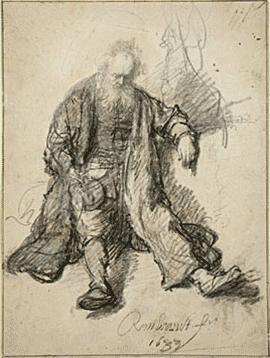Defining yourself as an artist is a lifelong endeavour. Each of us aspires to have a singular voice, a hallmark style and an artistic identity unlike anyone else. Achieving one's own style as an artist is complex, on-going and both technical and psychological. First of all, I believe, it has to do with defining who you are as a person and what you want to say, overall, through your art. It also has to do with hanging on to your belief in yourself, being willing always to learn and adapt, but nonetheless, being true to your own core identity. Sometimes that can be hard, especially when tough economic times demand lots of compromises.
One tool which I find very useful to help me define my identity is drawing. Whether it is with charcoal, graphite, pen and ink, conte crayon, chalk or silverpoint, it does not matter. It is the act of drawing that helps strip things down to bare bones, to try to get at the core of what I am trying to say. In other words, to define my art and thus to define me as an artist. Drawing is a tool with two rather different uses. The first is to make a finished drawing, a work of art that stands alone. The second is to draw small, quick studies for composition, distribution of lights and darks, etc. in preparation for a painting.
Lot Drunk, Rembrandt, 1632
Rembrandt, Jesus and the Adultress
Drawing, unlike painting, is a direct, spontaneous act, indicative of emotions and thoughts in fresh and unadorned fashion. Many of the great Old Master drawings will leave errors and show corrections - a new line of a cheekbone on top of one that was off in proportion, an arm which has changed position slightly since the first line was put down, a tangle of lines where the artist was thinking of how to depict something or even blobs of ink where the pen "misbehaved". Rembrandt had many a tussle with his pens and ink but very frequently, that drawing could be readily recognised as one done by Rembrandt.
Try using drawing, any drawing, as a pathway to defining more clearly who you are as an artist. It is often a surprising and enlightening exercise - and fun as well.

